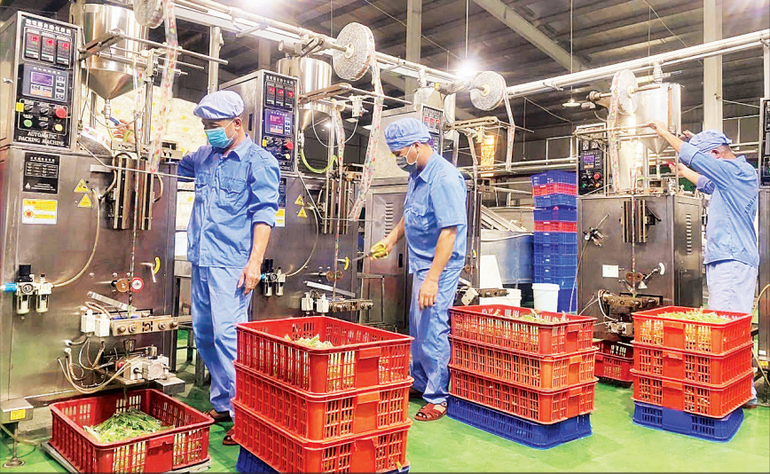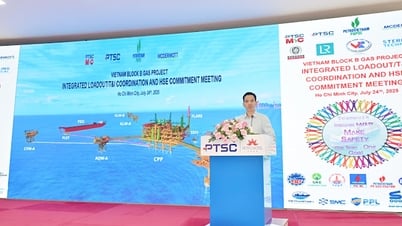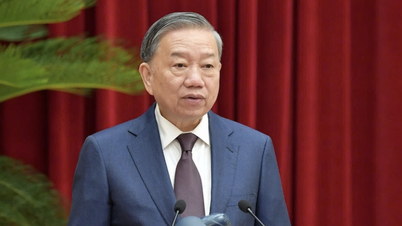The agreement to increase the regional minimum wage by 7.2% from 2026 is a step in line with the goals of growth, social security and wage reform, but also poses challenges for businesses in improving productivity and restructuring resources.

From here, it requires both employees and employers to have flexible adaptations to turn pressure into a driving force for development.
After two meetings, on July 11, 2025, the National Wage Council unanimously proposed to increase the regional minimum wage by 7.2% from January 1, 2026, equivalent to an increase of VND 250,000 to VND 350,000/month depending on the region. This is the 12th adjustment since 2013, and is a higher increase than the two previous consecutive adjustments, in 2022 and 2024 both increased by 6%.
Promoting growth and social security
Deputy Minister of Home Affairs Nguyen Manh Khuong, Chairman of the National Wage Council, said that after analyzing the domestic and international socio -economic situation and assessing positive and negative factors, the Council unanimously voted to increase the minimum wage for workers by 7.2%.
“The Party’s policy is to achieve high economic growth, starting with the target of 8% in 2025 and aiming for double digits in the following years. Wage policy also needs to adapt, creating new motivation for the workforce,” Mr. Khuong emphasized.
On the basis of the unification of National Wages Council Regarding the proposal to increase the regional minimum wage in 2026, the Ministry of Home Affairs will advise, develop and submit to the Government for promulgation a Decree adjusting the regional minimum wage applicable from January 1, 2026, and at the same time assess the impact and review related policy groups.
Representing the workers, Vice President of the Vietnam General Confederation of Labor Ngo Duy Hieu said that this adjustment basically meets the expectations of the trade union and workers. “The General Confederation will promote and mobilize workers to agree and make more efforts at work,” Mr. Hieu affirmed.
Mr. Dang The Minh, a worker at Vietfoods Factory, Hapro Industrial Park (Thuan An Commune, Hanoi) could not hide his joy when he heard that the regional minimum wage would be adjusted from the beginning of 2026. He shared: "This is the right policy of the State and Government to suit the development trend of the country". With an increase of 350,000 VND/month, although not much, Mr. Minh believes that this will help significantly improve his personal life.
As for Ms. Dang Thi Tuyen, a worker at Nghi Loc Garment Factory (Nghe An), her expectations do not lie entirely in the increase. “We were informed of a salary increase, but in reality, our actual salary sometimes decreases due to increased social insurance contributions. In addition to a salary increase, I hope to have more practical benefits such as vacations and health care,” Ms. Tuyen shared. What she cares about is stable employment and businesses with many orders so that workers can increase labor productivity and improve income.
The sharing of Mr. Minh and Ms. Tuyen partly reflects the practical impact of the adjustment of regional minimum wages in 2026, a policy expected to motivate workers, contributing to social security
Challenges and solutions for businesses
According to Dr. To Hoai Nam, Vice President of the Vietnam Association of Small and Medium Enterprises, the 7.2% increase is relatively appropriate to ensure social security and improve the quality of life for low-income workers.
However, in the current context, small and medium-sized enterprises are recovering slowly, facing rising input costs and weak purchasing power, adjusting the minimum wage will create great pressure. Enterprises in the manufacturing sector or using a large number of workers with thin profit margins may have to streamline their workforce or delay other activities, such as investment plans for improvement, equipment, or innovation to offset the increased labor costs.
Mr. Nam suggested considering policies to extend, postpone or reduce compulsory insurance premiums to reduce the cost burden for businesses and employees. For businesses facing difficulties, especially export businesses or those in the supply chain, it is advisable to consider extending export insurance premiums.
In addition, the Government needs to restore preferential credit programs, interest rate support, and credit guarantees, especially for small and medium-sized enterprises that employ a large number of workers. In the context of increasing trade risks, there is a need for more specialized legal support and trade promotion for this business sector.

On the side of the Vietnam Association of Small and Medium Enterprises, we hope to receive more resources from the Government's support programs to expand the scale of support, help businesses grasp market information, prepare activities to protect businesses with international trade, and handle international disputes.
Regarding businesses that employ labor, Mr. Ha Ngoc Son, Vice Chairman of the Board of Directors of Vietnam Food Joint Stock Company, said: “When the minimum wage increases, labor costs, insurance, and union costs all increase, leading to an increase in product prices. In the context of economic fluctuations and increasingly fierce competition, especially with high-quality and low-cost imports from the US, domestic manufacturing enterprises must quickly restructure, increase productivity or accept losing market share.”
However, according to Mr. Son, if businesses can take advantage of the downward trend in prices of imported machinery and equipment, they can invest in technology to adapt, thereby turning pressure into opportunity.
The representative of the Hanoi Textile and Garment Joint Stock Corporation (Hanosimex) also shared that the continuous increase in regional minimum wages creates a huge financial burden, especially for labor-intensive textile and garment enterprises. This affects future human resource plans because enterprises must calculate production and business plans to ensure efficiency.
However, increasing the regional minimum wage also indirectly promotes restructuring and increases productivity of enterprises. Hanosimex hopes that the State will create a fair competitive environment and have more preferential policies for enterprises that employ many workers, especially older workers.
Adjusting the regional minimum wage in 2026 is an important step in wage reform, contributing to raising income, stabilizing the labor market and promoting socio-economic development.
For this policy to be effective, both workers and businesses need to adapt flexibly. Workers need to improve their skills and productivity. Businesses need to restructure, apply technology, and increase management capacity to optimize costs and increase competitiveness. When both sides share and work together, increasing the minimum wage will become a common driving force for sustainable development.
Source: https://baolangson.vn/tang-luong-toi-thieu-vung-tao-dong-luc-cho-su-phat-trien-5053939.html





























![[Photo] Signing of cooperation between ministries, branches and localities of Vietnam and Senegal](https://vphoto.vietnam.vn/thumb/1200x675/vietnam/resource/IMAGE/2025/7/24/6147c654b0ae4f2793188e982e272651)








































































Comment (0)